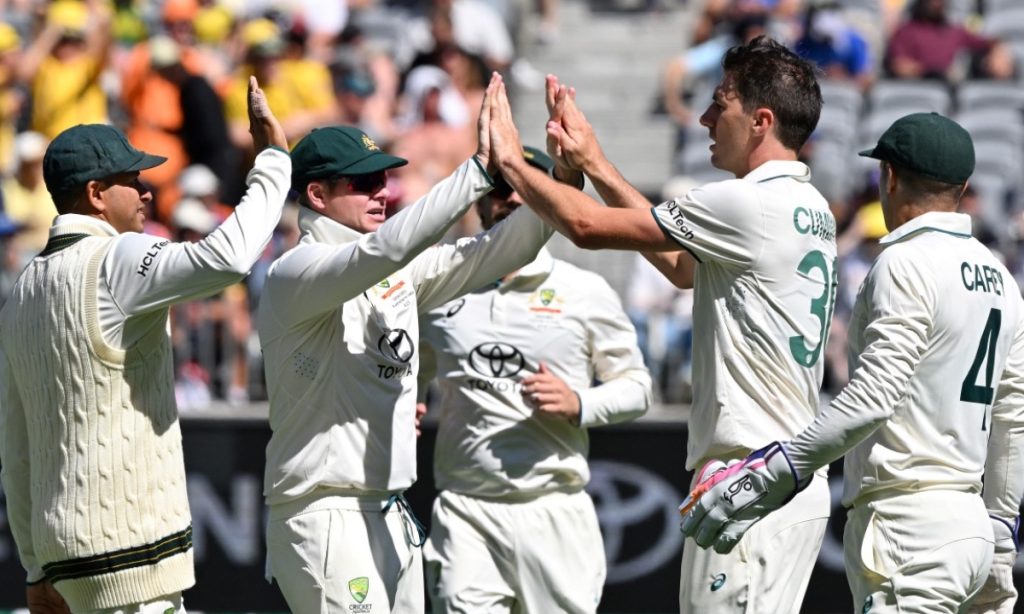As the cricketing world sets its gaze on the Adelaide Oval for the second Test of the Border-Gavaskar Trophy, Australia finds itself at a pivotal moment, not just in the series but in its cricketing narrative. The pink ball Test, scheduled for December 6, 2024, promises to be a spectacle under the lights, with the Australian team facing the challenge of bouncing back from a defeat in Perth. The absence of Josh Hazlewood, a linchpin in their bowling attack, due to a side strain, adds an element of unpredictability to their strategy. However, in steps Scott Boland, a bowler known for his precision and effectiveness with the pink ball, ready to fill the void.
The Australian lineup for this crucial encounter reads like a blend of experience and emerging talent. Usman Khawaja, with his resilient batting, stands at the top, partnered by Nathan McSweeny, who brings youthful exuberance to the crease. Marnus Labuschagne, with his technical prowess, and Steve Smith, the modern-day batting maestro, fortify the middle order. Travis Head, with his aggressive flair, complements the solidity of Smith, making the Australian batting lineup a formidable challenge for any bowling attack.
Mitchell Marsh, despite injury concerns, remains a crucial part of the team, offering versatility with both bat and ball. His inclusion provides balance, especially in conditions where the pink ball can swing and seam under lights. Alex Carey, the wicket-keeper batsman, adds depth to the batting, while his glovework behind the stumps has been pivotal in keeping the pressure on the opposition.
The bowling attack, led by captain Pat Cummins, is where Australia’s hopes largely rest. Cummins, with his ability to generate pace and bounce, alongside Mitchell Starc, known for his lethal swing, forms a pace duo that has troubled many a batting lineup. Nathan Lyon, the off-spinner, with his mastery of line and length, remains the team’s premier spinner, expected to exploit any turn or bounce on offer at Adelaide.
The inclusion of Scott Boland in place of Hazlewood is not just a replacement but a strategic choice. Boland, with his impeccable line and length, has a history of performing well with the pink ball, notably against India in previous encounters. His role will be to provide that extra seam movement, which could be crucial under the lights of Adelaide.
As Australia converges in Adelaide, the atmosphere is one of determination. The loss in Perth was not just a defeat but a lesson in resilience and adaptability. The Australian camp, under Cummins’ leadership, has had an extra day to prepare, focusing on how to counter India’s formidable batting lineup and their own bowling strategy with the pink ball.
The closing days leading up to the Test have seen Boland in action, playing for the Prime Minister’s XI against India, giving him valuable match practice with the pink ball. This preparation, combined with the team’s collective experience, sets the stage for what could be a closely contested match.
The second Test isn’t just about reclaiming the series; it’s about showcasing Australia’s depth in talent and their ability to adapt under pressure. With Boland stepping into Hazlewood’s shoes, the team’s strategy might slightly shift, but the core remains the same: to outplay India in their own conditions, under the unique challenge of the pink ball. As the lights of Adelaide Oval illuminate the pitch, all eyes will be on how this Australian side, with its blend of seasoned campaigners and rising stars, takes on the challenge. The Border-Gavaskar Trophy, with its rich history, awaits another chapter, and Australia, with its back against the wall, is ready to write it with determination and skill.

